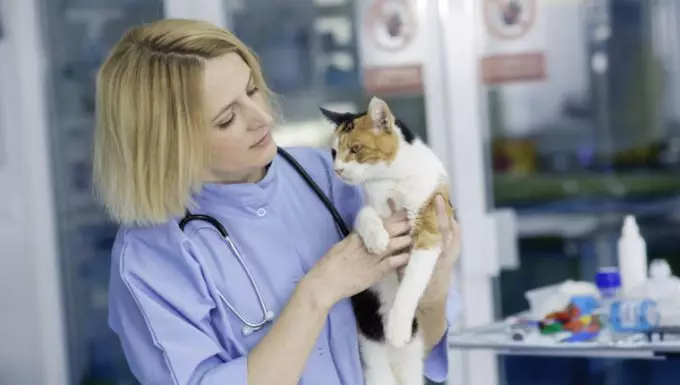Eosinophilic granuloma complex (EGC) is a term that encapsulates a collection of skin disorders that can affect cats, resulting in varying degrees of discomfort and visible lesions. This complex primarily manifests through three distinct yet interrelated forms: indolent ulcers, eosinophilic plaques, and eosinophilic granulomas. Although any breed of cat can develop these conditions, it has been observed that they are somewhat more prevalent in female cats than in their male counterparts.
Cats suffering from the eosinophilic granuloma complex exhibit a range of clinical signs. The most prevalent symptoms include the formation of lesions—particularly around the lips and mouth—which may be accompanied by hair loss, swelling of the footpads, and inflamed skin. Additionally, affected cats might display systemic signs such as swollen lymph nodes, redness in various areas of the skin, and painful mouth ulcers. Pet owners should remain vigilant, as these symptoms indicate that the cat requires a veterinary assessment.
The exact etiology of eosinophilic granuloma complex in cats remains largely unclear, leaving veterinarians and pet owners speculating about potential triggers. Allergic reactions are often suspected, with food ingredients and environmental allergens among the leading suspects. Other postulated causes may include insect bites, autoimmune disorders, and underlying health issues that compromise the immune system. The lack of definitive causal pathways means that a tailored approach to each case is crucial.
Diagnosis begins with a comprehensive evaluation by a veterinarian. This process typically involves an extensive review of the cat’s symptoms and medical history, as well as a physical examination. Diagnostic tests, including blood and urine tests, and skin scrapings, may also be performed to rule out other conditions. The veterinarian’s findings guide them in formulating an appropriate treatment plan tailored to the individual cat’s needs.
Treatment for eosinophilic granuloma complex typically focuses on managing symptoms and identifying underlying causes. This might involve dietary adjustments to eliminate potential allergens, which can take weeks to determine effectively. Furthermore, anti-inflammatory medications play a pivotal role in reducing discomfort and promoting healing. It is imperative for pet owners to adhere meticulously to the prescribed dosage and duration of any medications, as inappropriate use can lead to setbacks in recovery.
Regular follow-up veterinary visits are essential to evaluate the effectiveness of the treatment regimen and to make any necessary adjustments. These visits provide an opportunity for pet owners to discuss their observations, allowing for a collaborative approach to their cat’s health management.
Eosinophilic granuloma complex is a multifaceted condition requiring attentive care and proactive management. Understanding the signs and effective interventions can significantly improve the quality of life for affected cats. If you suspect your cat may be suffering from this condition, consulting with a veterinarian is the first step toward recovery. Engaging in ongoing dialogue about your cat’s health and treatment will foster a successful path to well-being.


Leave a Reply